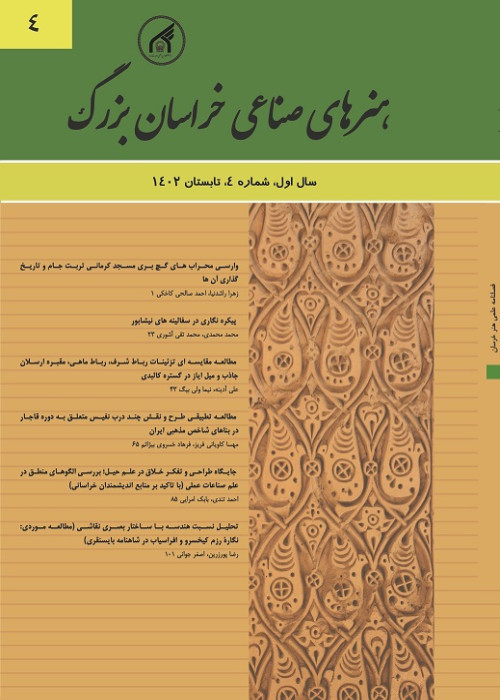A Look at the Beginning and Expansion of the Afshan Design in Iranian Carpets, Case Study: The Carpet of the Emperor (Animal Carpet) Preserved at the Metropolitan Museum of New York
Among the remnants of the Safavid era are various designs such as Medallion carpet, prayer rug, hunting, garden and vas carpet. among this carpet In the meantime, there is an interesting and different design, which in most of the Latin sources are called Herati, and According to the title can be said to belong to the Khorasan area. This design is known as Afshan Shah Abbasi, Afshan or Afshoon in the market and some Persian sources. In addition to the rural and tribal areas of Khorasan, it is also woven in other prestigious areas of Iran such as Isfahan, Tabriz, Kashan and Kerman. The Herati design is composed of Khatai spirals, with shah palmet and lotus motifs, Cloud band and small flowers and the major colors are dark red, light yellow and dark blue. Most likely This first-time pattern has been used in Timurid decorative arts, especially bookbinding and tiling, and has become the focus of carpet designers over time. Artists of the Safavid era have woven this design in two forms, Shah Abbasi's (Big Flowers and palmet) Or Shah Abbasi's and Animal's. The Emperor Carpet Reserve at the Metropolitan Museum of Fine Arts in New York is the most notable work in which the palmet motifs are combined with animal motifs. In addition to Iranian artistic features, this unique and beautiful work has influenced from the decorative arts of the eastern parts of Iran. according the execution of the motifs and the type of composition, it is possible that it was designed in Tabriz or influenced by the painters of the Second Tabriz School of Painting. The main question of the research is which schools of painting have been creating and promote Afshan design? Also by which artist or in what Iranian school was the carpet of the emperor designed? This research is descriptive and analytical And it has been done way documentary study Its purpose is to introduce the features of the Emperor's carpet index. A study of Safavid carpets found that Khorasan artists rarely use animal motifs to decorate carpets, Most of the carpets decorated with animal motifs belong to the northwestern or southern regions of Iran, A tradition that we see in later centuries, especially during the Qajar period. It should be noted that the emperor's carpet designer had a very high skill in performing plant, animal and talking tree (vaq vaq), We see similar to it in the carpets of the western regions of Iran in the Safavid era. Considering the similarities with some of the paintings of the second school of Tabriz, it is possible that the carpet design was done in the court workshops of the Safavid era and under the supervision of the painters of this school.
- حق عضویت دریافتی صرف حمایت از نشریات عضو و نگهداری، تکمیل و توسعه مگیران میشود.
- پرداخت حق اشتراک و دانلود مقالات اجازه بازنشر آن در سایر رسانههای چاپی و دیجیتال را به کاربر نمیدهد.


